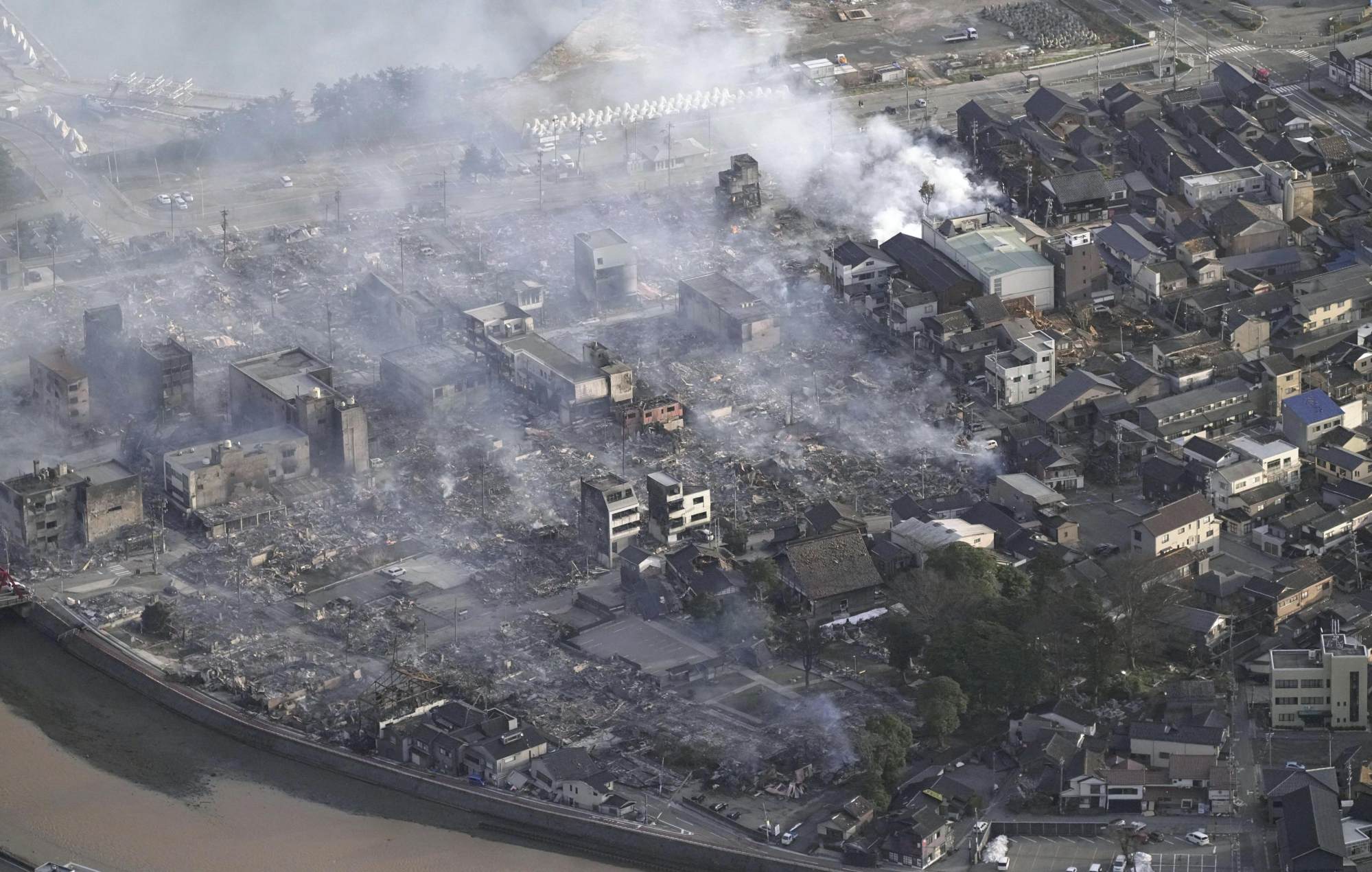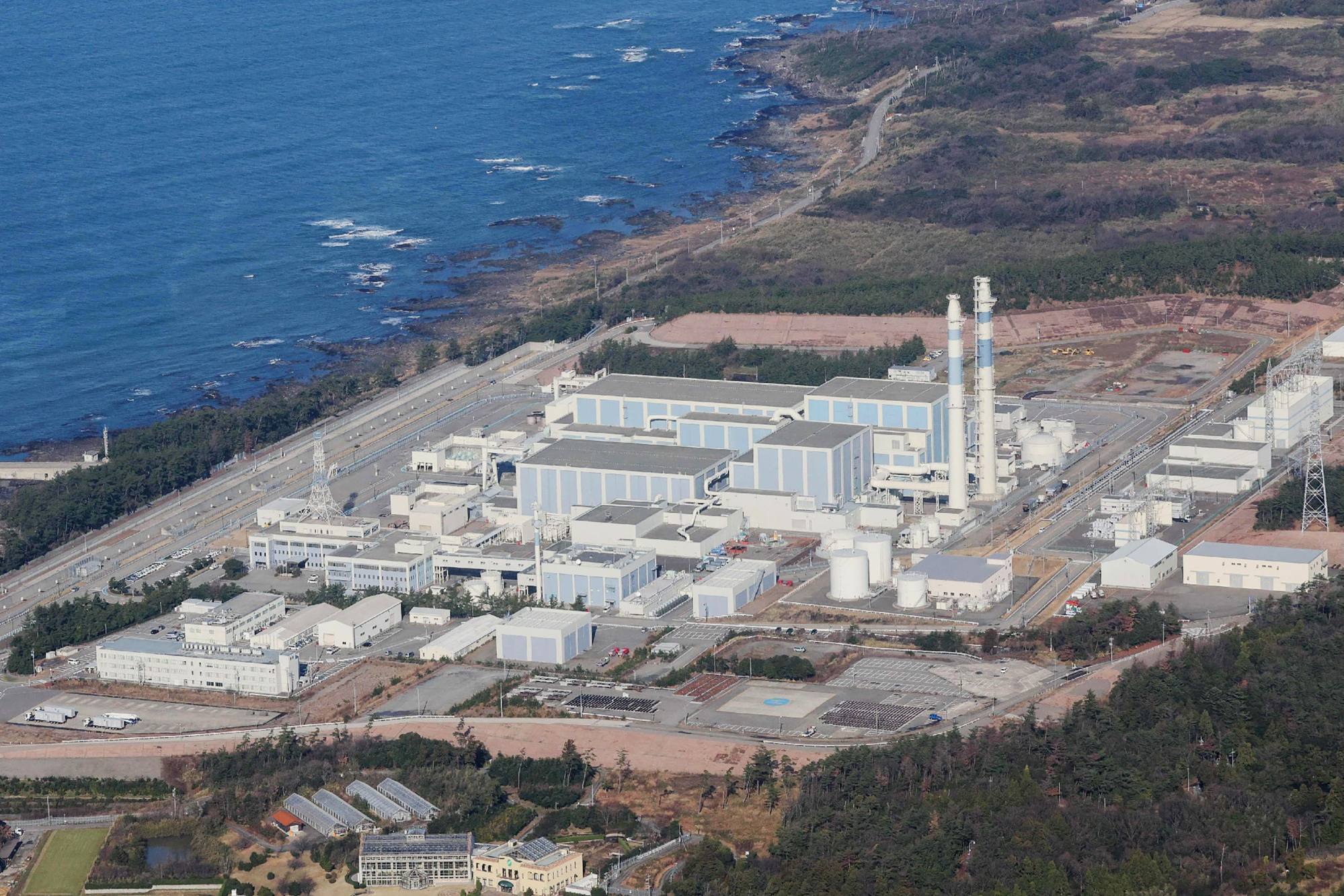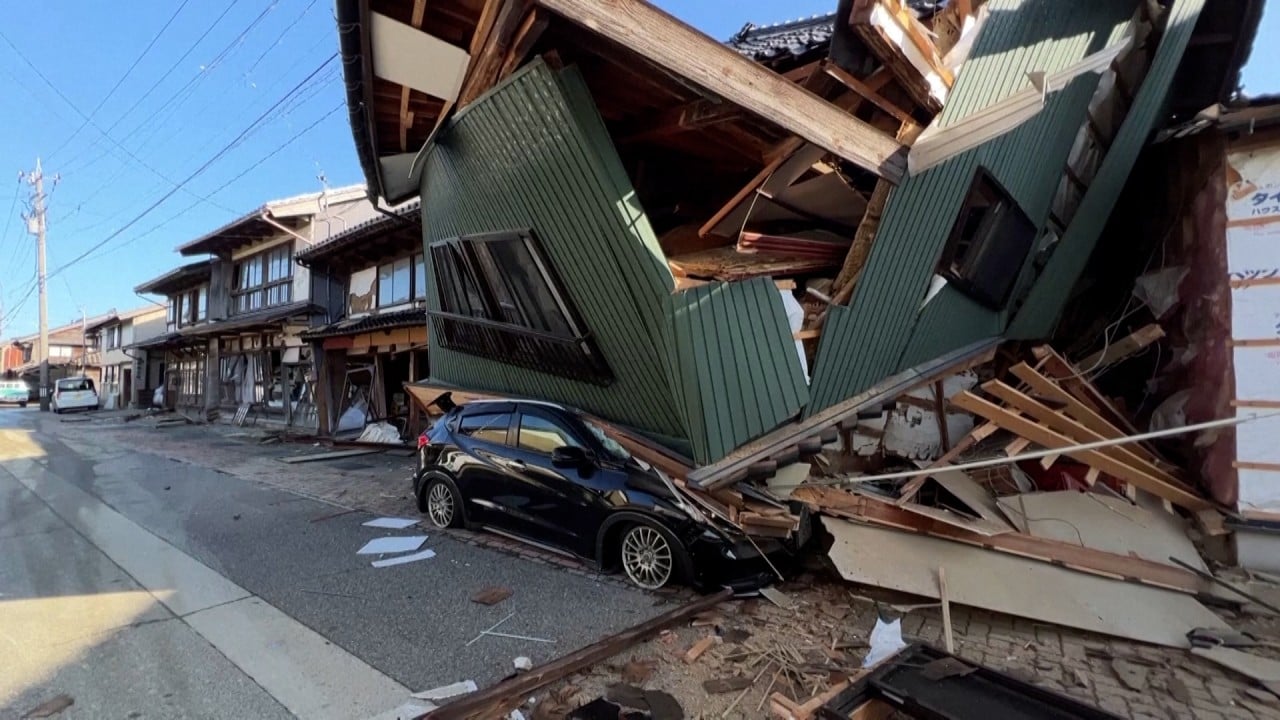
Survivors recount experience of Japan’s powerful New Year’s Day earthquake: ‘it was pretty frightening’
- Many described the magnitude-7.6 tremor, which left at least 48 dead and caused considerable destruction, as the biggest one they have ever felt
- ‘It was pretty frightening. But all we can hope for now is that the worst is over,’ said a resident of Toyama City
“I’m 66 years old and that was the biggest quake that I have ever experienced,” said academic Yoichi Shimada, who lives in Fukui City, some 200km southwest of the epicentre of the temblor that struck on Monday evening and triggered a tsunami alert.
“We were in the garden when there was an alert on my son’s mobile phone, but then nothing happened,” Shimada said. “There have been a lot of minor earthquakes on the Noto Peninsula in the last couple of years so we never thought anything of it.”
“Then, a couple of minutes later, there was another alert on his phone and the shaking started a few seconds later.
“It was very powerful and it went on for a long time. It seemed to last far longer than I have felt in the past,” he said.
Shimada added he and his family found it difficult to stand upright while the quake continued, although their home was undamaged.
“We were watching [national broadcaster] NHK for the latest news and they were constantly telling people to leave coastal areas and find safety inland,” he said. “My home is a few kilometres from the beach, but we were told not to try to go there and to stay at home unless it was absolutely necessary.”
Residents of the affected areas were instructed to stay off the roads because the emergency services needed to reach people who needed help.
“There were also sirens in the town and messages from the local government to stay at home,” Shimada said. “I’ve seen on the news that more than 20 people have been killed, which is obviously terrible, but this is not as bad as the March 2011 disaster in Tohoku,” he added.
The death toll from the earthquake rose to 48 on Tuesday, officials said.
Greg Hadley, a professor at Niigata University, was also taken aback by the intensity of the shaking as the tremor built to a crescendo.
“I received the first warning on my mobile phone and only felt a tiny tremor but then a short while later the second one came – and very quickly I thought ‘uh-oh’,” he said.
A bookcase and ornaments around his home in Niigata came crashing down as the building reverberated, prompting Hadley and his wife to camp outside the street, where many of their neighbours had also gathered. A large wall had collapsed onto the street and people cleared the debris in case emergency vehicles needed to use the road.
The area was about 140km from the epicentre, and water supplies to the Hadleys’ home were lost but the electricity remained connected.
Aftershocks continued through the rest of the evening and the tsunami warning was later lifted, he said. Residents of the district, about 3km from the waterfront, were instructed to be “cautious” when close to coastal areas, particularly in the event of another major aftershock.
By Tuesday morning, the advisory was to remain off the main roads that were rendered impassable due to landslides, subsidence or collapsed bridges, so Hadley used his time to examine his home for structural safety.

Hadley and his neighbours also paid close attention to updates on the state of the nuclear reactors, as they lived 60km from Tokyo Electric Power Co’s Kashiwazaki-Kariwa power plant, the largest in the world.
Most of the facility’s reactors were in a state of cold shut-down for safety upgrades after the Chuetsu offshore earthquake in July 2007.
But four of the seven reactors were restarted when the 2011 Tohoku earthquake destroyed the Fukushima Daiichi plant, forcing Tepco to once again shut down Kashiwazaki-Kariwa for further safety measures.
Last week, Japan’s nuclear regulator gave Tepco permission to resume operations at the plant and the company is expected to carry out checks before the reopening after it confirmed that around 14 litres of radioactive water spilled from two reactor fuel pools. Tepco said the spill was within the reactor buildings and officials were monitoring radiation levels.
“A lot of people have been looking at the nuclear plant with suspicion,” Hadley said. “They quickly said there were ‘no problems’ with the reactors, but people are asking how there could have been a problem as the reactors are all meant to be in cold shutdown.”

A resident of Toyama City, just 100km south of the epicentre, said he and his wife were forced to take shelter under their kitchen table when the quake hit.
“When it started, it was different to other earthquakes,” said the man, who did not want to be named. “It shook left and then right, the doors were swinging open and closed and I could hear things cracking and breaking in the house.”
Once the swaying abated, the damage was largely limited to utensils dropping off hanging racks in the kitchen, pictures coming off the walls and ornaments and other objects that had fallen over.
“I’ve lived here for more than 20 years and it was certainly the biggest one I have ever felt,” he said. “It was pretty frightening. But all we can hope for now is that the worst is over.”


